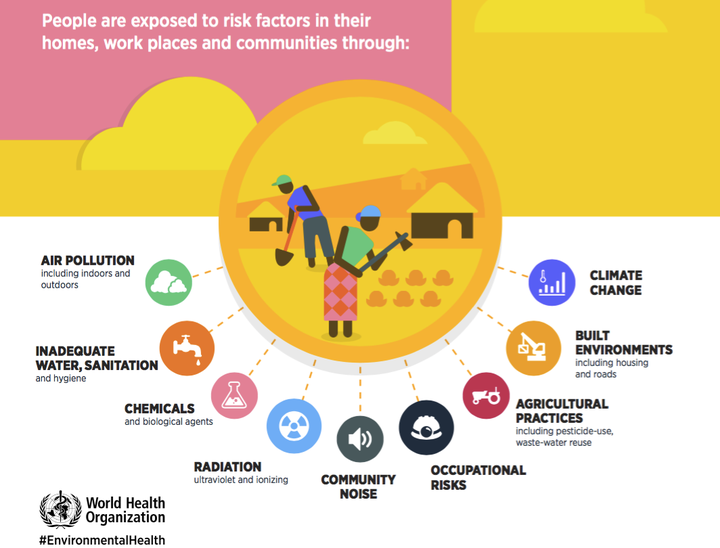
It's no secret that the Earth is in dire straits. Photos of the waterways in Rio de Janeiro, still reeking of sewage despite a years-long cleanup plan ahead of this summer's Olympics, prove just how difficult it can be to fix what humanity has fouled.
The human toll of all this pollution and destruction is vast. A report released Tuesday by the World Health Organization links nearly 13 million deaths worldwide to preventable environmental factors. The study found that nearly 1 in 4 deaths in 2012, the most recent year cited in the report, had to do with surroundings made unhealthy by air pollution, poor water quality and other environmental factors. More than 1 in 4 deaths of children under the age of 5 were linked to the same sources.
"A healthy environment underpins a healthy population,” Margaret Chan, director-general of WHO, said in a statement. “If countries do not take actions to make environments where people live and work healthy, millions will continue to become ill and die too young.”
In distinguishing between healthy and unhealthy environments, the report considers factors like air and water quality, workplace and road safety, man-made climate change and ultraviolet radiation. All of these variables can be modified by governments and technology, WHO notes, unlike events like natural disasters. Factors like diet, pollen and alcohol and tobacco consumption were also excluded from the study.

The report notes that the people most at risk from an unhealthy environment are children, older adults and people living in low- and middle-income countries. Regions including China, Southeast Asia and sub-Saharan Africa had the most deaths related to environmental factors.
The findings update a report first issued in 2006, and reflect a decade's worth of ominous developments around the globe, including Beijing's crippling smog and India's unsafe drinking water. Issues like infectious diseases and nutritional problems actually caused a smaller percentage of deaths in 2012 than in 2002, while deaths from injuries and noncommunicable diseases, like stroke and heart disease, increased during that period.
The report also notes that because "emerging risks" like climate change affect everything from sea levels to crop yields, WHO's conclusions may actually be underestimating "the global burden of disease attributable to reasonably modifiable environmental causes."
Not all of the news is bad. WHO notes that certain cost-effective, government-sponsored measures, like replacing air-polluting cookstoves with clean technology, can alleviate environmental stressors. And efforts to address infectious diseases and water sanitation in regions such as sub-Saharan Africa and India have helped curb mortality rates.
"It is clear that reducing the environmental burden of death and disease is entirely possible through cost-effective interventions," the report says. "Creating and maintaining healthy environments should be a priority of primary prevention."
Sixty-six percent of humanity is expected to live in cities by 2050 -- a demographic shift that WHO says should compel governments to address environmental health concerns with renewed vigor, before we end up in a future straight out of "Blade Runner."
"The direct and indirect impacts of emerging risks, such as climate change and ecosystem change, need to be tackled urgently, as they are set to become the most challenging risks populations will face in the coming decades," the report says.
